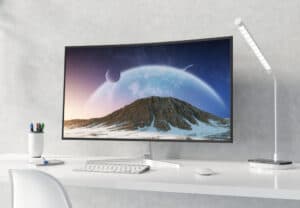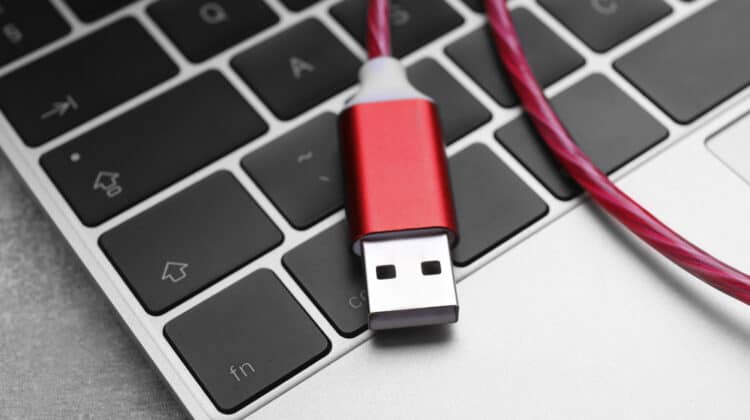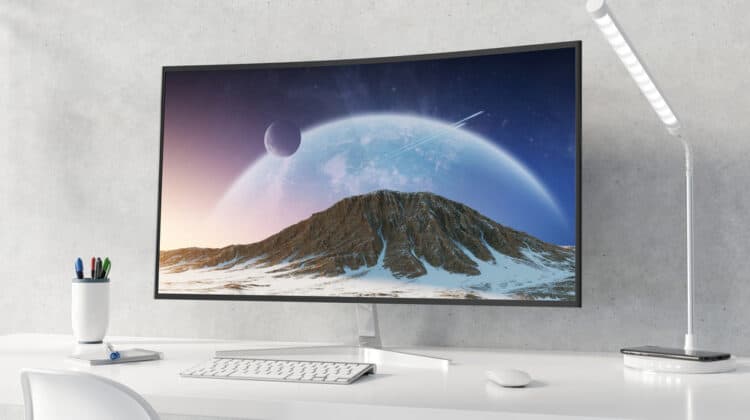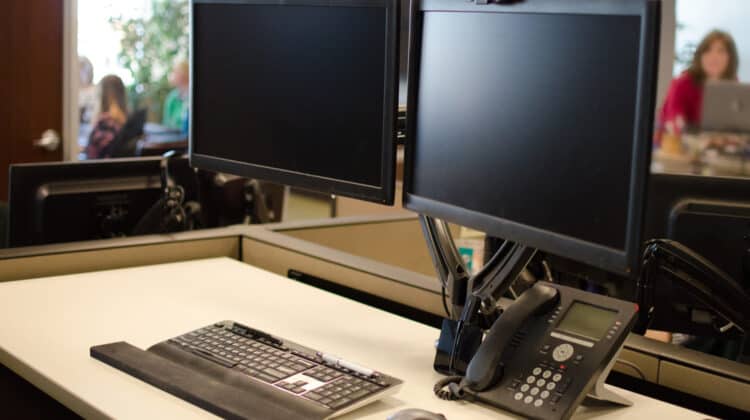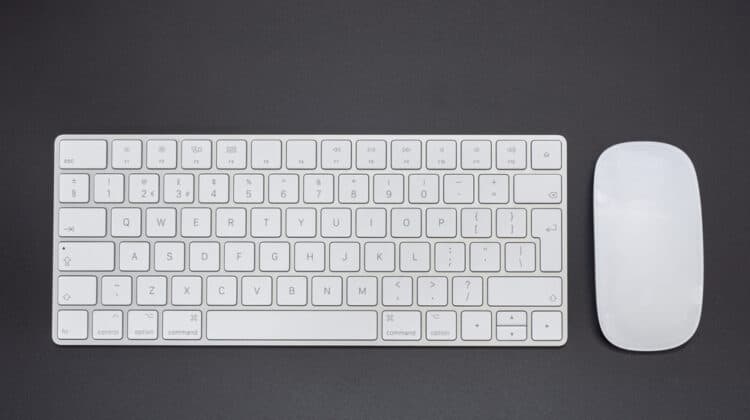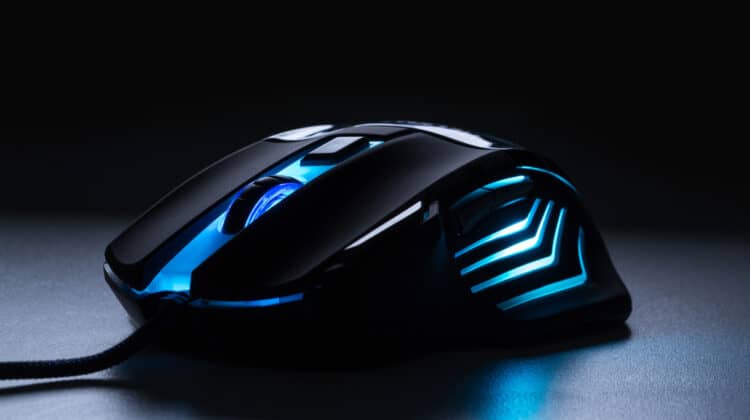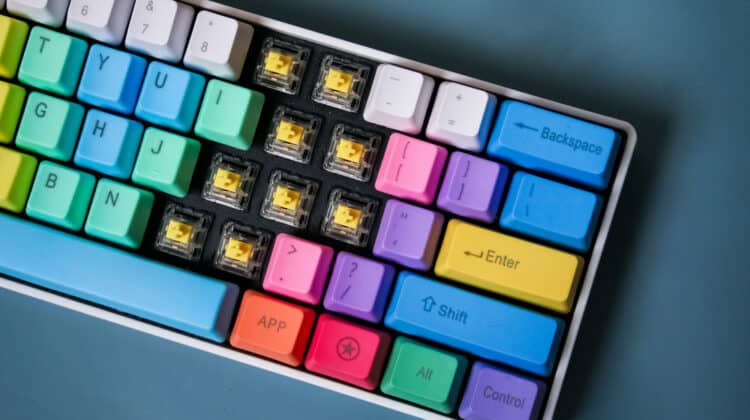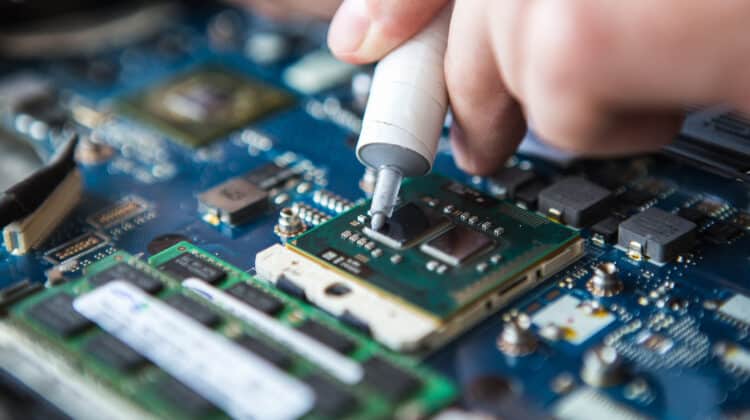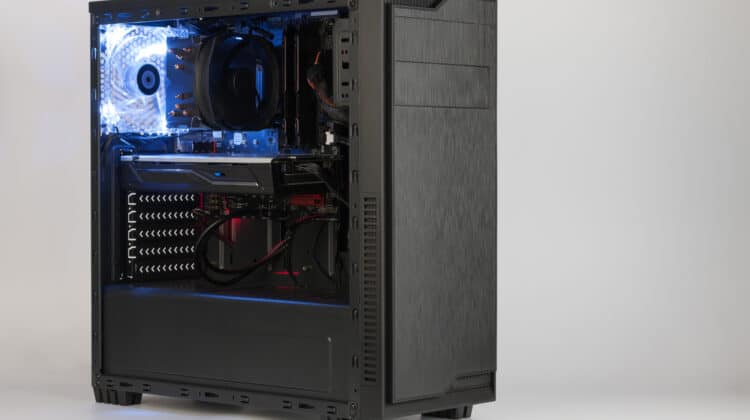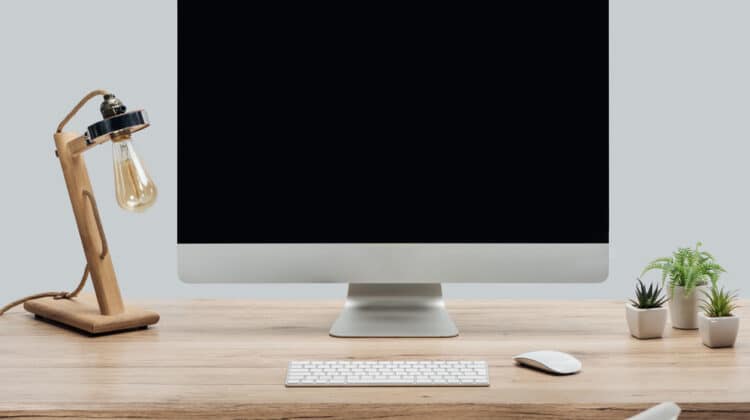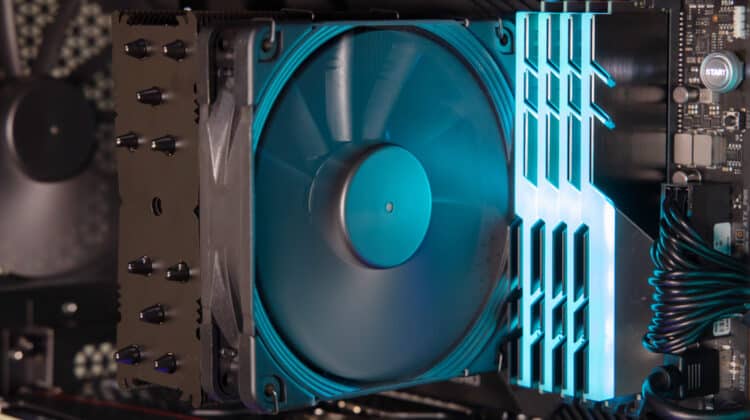
Computers are fascinating inventions that can help human beings in many respects.
One of them is organizing and storing information.
When you create files, download and play games, or back up your movies and photos on your computer, it has to store them somewhere safe and permanent.
As a result, you can access your saved data easily and quickly whenever you want.
Now, you may wonder what part of the computer is responsible for storing user- and system-generated data.
Where Is Most Data Stored On A Computer?

The computer saves information on the hard drive by default.
The hard drive is the internal component on all laptop and desktop PCs that writes and reads data through a spinning head over a magnetic disc.
Some modern laptops use solid-state drives instead of mechanical hard drives, offering faster and more efficient data storage.
However, since SSDs are more expensive than HDDs with the same capacity, most manufacturers still use mechanical hard drives.
These storage components are the default hardware used in every computer, without which the system can’t function.
You can also choose external storage devices for different reasons, like not having enough hard disk space or organizing your data for better access.
The computer uses another form of permanent storage to save the system data, not the user-generated data.
ROM (Read-Only Memory) is a chip that holds all the system information and firmware essential for your system boot-up.
As a result, the user can’t alter the information written on it by the manufacturer, and if you try to alter it, you’ll damage the system.
The key point about all these storage types is that the CPU can’t read their information unless it goes to the RAM.
How Does A Hard Disk Work?

The computer’s hard drive is the main component that stores every piece of information, including the operating system, installed apps, and user-generated data.
A hard disk uses magnetic technology and physical parts to read and write data.
It involves a magnetic-coated aluminum platter that holds your data and reads and writes the information through an arm that moves over it while it spins.
The computer has to change whatever you enter into ones and zeros to become readable by the computer.
These ones and zeros represent electrical voltage.
The absence of voltage is zero, and the presence of voltage is one.
When the information goes to the hard drive, it has to fit the magnetic nature of the disc.
As a result, the data receive a magnetic value (north or south) representing zeros and ones.
When the spinning head hovers over the disc, it interprets the magnetism and changes it into a digital signal readable by the computer.
The main characteristic of a hard drive is that it doesn’t store data sequentially.
Here’s what it means:
The hard disk has different compartments to store data on.
When you store a file on the hard disk, it may be larger than the nearest compartment.
The system will break down the file to fit the compartment.
The file fragments may be stored in different parts of the disk without a specific order, i.e., non-sequential.
Based on these features, the hard disk has the following pros and cons:
1. High Capacity And Low Cost
The technology used in hard disks isn’t so advanced.
It’s the same technology used in floppy disks.
It’s a simple platter that spins to read and write data.
As a result, it can store huge amounts of data at a lower cost than other storage types.
Today’s hard disks have a maximum capacity of 20 terabytes, which is massive and more than enough for many average users.
2. Low Speed
Hard drives are physical components that rely on the movement of heads and platters.
In addition, the fragmented nature of data means the head has to touch different parts to gather the fragmented data.
All these factors make the hard disk slow, making it unsuitable for applications that require a high speed.
In addition, the speed of the hard drive can vary depending on the disc’s rotation speed.
Depending on the technology, you may have faster or slower hard drives.
3. Sensitivity
The hard disk has moving parts and a sensitive spindle which makes it vulnerable to movements and shocks.
However, since it’s inside a hard case, it’s highly durable under normal use.
In addition, it’s stationary on a desktop computer, making it less sensitive.
However, laptop hard disks are more sensitive because of the device’s portability.
As a result, you should be careful while moving a laptop, especially when it’s on.
If the hard drive gets damaged, you may lose your data and may never be able to recover it.
Handling Stored Data On A Hard Disk

Now that you know where your information goes on a computer, you may wonder how the computer performs the saving task.
While the hard disk is a hardware component that stores your data, these saving operations are performed on a software level.
The main software responsible for these operations is the operating system.
When you get a new hard drive, you can divide it into different parts, called partitions.
These partitions are labeled as Drive C, D, E, etc.
Usually, Drive C is your system drive that stores your operating system and other program files.
That’s why you’ll lose all the files stored on this drive when you install a new operating system.
The other drives store your personal files and don’t get deleted when you reinstall your OS.
You can organize your data on a computer by placing them inside files and folders, all made possible by the operating system.
External Hard Drives

As mentioned, internal hard drives are the default storage components essential in all computers.
However, you may need to upgrade your storage because the hard drive capacity isn’t enough for your needs.
One of the best options is an external hard drive that works the same as an internal one but is inside a hard case making it safe to carry around.
External hard drives come in many capacities at a low cost per unit.
They connect to the PC through the USB port and are easy to carry around.
However, they have the same shortcomings as an internal hard disk and are slower.
An internal hard disk can transfer data faster because it’s near the CPU.
Instead of using an external hard drive, you can upgrade your internal HDD to a higher-capacity one if your computer’s specs allow it.
However, an external HDD is a better choice if you want a portable storage device that can move between computers and you can take to different places.
However, you should be careful because external hard drives are even more sensitive because there’s a higher chance that you accidentally drop them while moving them.
Different Types Of Data Storage
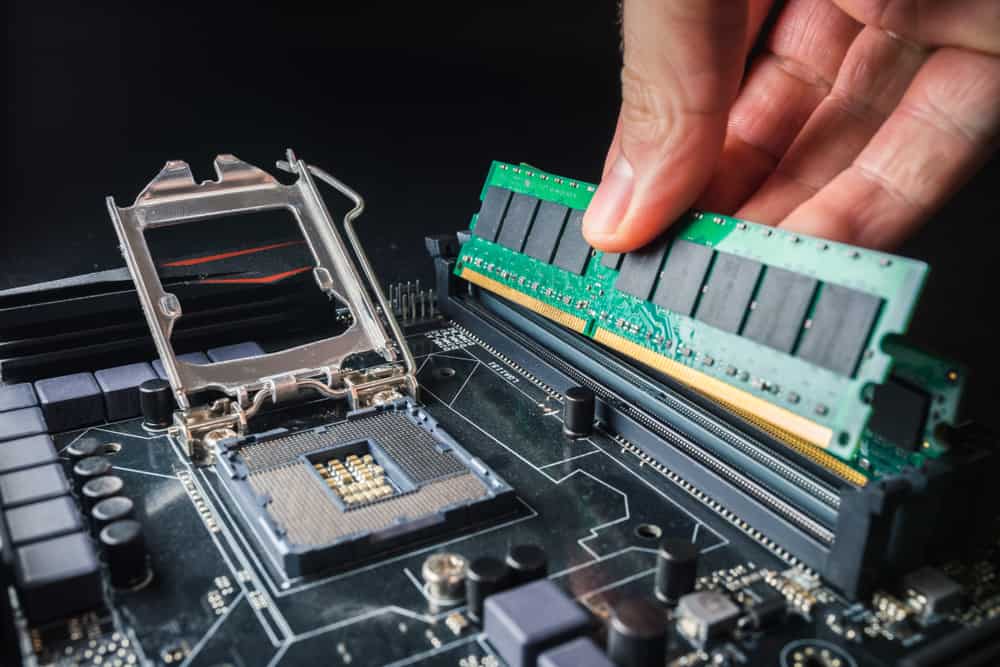
1. Temporary (Primary)
The data your computer works with has to be readily and promptly accessible for the CPU to process.
As a result, it needs all the information in a place physically close to the CPU with fast technology.
This storage is made possible by the RAM.
Random Access Memory has the same technology as flash memory, which is the most efficient type of storage.
The only difference is that RAM relies on the electric current to work.
When the electricity doesn’t flow into the RAM sticks, they stop working, and you’ll lose your data.
This feature makes RAM volatile, meaning the data can’t be saved permanently, requiring a second type of storage.
Random access memory is considered primary because it’s critical in the computer’s operations.
None of the information stored on the hard disk, ROM, or other types of storage is readable by the computer per se.
The only way is to transfer the data to the RAM so the CPU can process it.
As soon as you turn on the computer, the data from BIOS goes to the RAM and help it boot up.
Then the operating system loads on the RAM, and you can start working on your computer.
All the files, browser tabs, and applications you open and click on are transferred to the RAM to help you use your computer.
Although RAM is the most important primary memory, it’s not the only one used in computers.
Cache and virtual memory are other types of primary memory that the computer uses based on its requirements.
The cache is faster than RAM and used for processes that require ultra-fast speed.
Virtual memory is part of the hard disk that functions as RAM to help solve low-storage issues.
2. Permanent (Secondary)
Secondary memory is where your computer saves data permanently.
If you don’t want to lose the data being processed, produced, and altered in RAM, you need to save it on the hard disk.
Otherwise, everything will disappear as soon as the computer loses power.
You can have external storage devices and internal storage that keep essential data.
These external devices connect to your PC via USB ports and allow you to carry your files everywhere.
These devices are also called offline storage because they can disconnect from the computer, and you need to reconnect them to use them.
Other Storage Types

As mentioned, hard disks use magnetic technology to read and write data.
However, they’re not the only devices used to store data permanently.
Depending on the technology to read and write data, we have other storage types used as secondary storage devices.
1. Optical
Optical storage devices mainly include CDs, DVDs, and Blu-ray discs.
These devices turn data into ones and zeros by inscribing pits (small holes) on a smooth disc.
The pits represent zeros, and the lands (raised parts) represent ones.
You need an optical drive to read the data on an optical disc.
These optical drives are the CD or DVD drives on computers that take the discs in and play them.
They read the information by projecting a laser beam on the spinning disc.
Although they can have large capacities depending on the type, they’re nearly obsolete because of the more exciting alternatives.
You may also see optical devices referred to as tertiary devices.
The reason is that they need the drive to read the data stored on them.
That’s different from external HDDs and SSDs or flash drives, which connect to the computer via the I/O port.
2. Semiconductor
The storage devices that use semiconductor technology are the most recent type, offering great advantages over optical and magnetic storage.
The most important storage devices using flash technology include USB flash devices and SSDs.
This technology is more reliable, faster, and with less power consumption.
In addition, since there are no moving parts, the storage is noiseless.
Instead of inscribing data on a magnetic or optical disc, semiconductor technology uses chips to store data.
These chips consist of thousands of cells that use electronic circuits to store data.
In this type of storage, the ones and zeros are in the shape of an electric current.
When electrons are present, the data is interpreted as one.
When they’re absent, we have zeros.
The transistors used in flash memory can store data more efficiently because data can be more compact inside the memory cells.
As a result, this technology is gradually replacing the hard drive mechanical technology in modern computers.
Some laptops have solid-state drives instead of hard drives as their default storage component.
However, these drives are more expensive, although the cost per byte of these drives is decreasing steadily.
3. Cloud
New storage solutions have appeared as technology improves, and the need for high-capacity and reliable storage increases even among average users.
Cloud storage is one of these solutions made available by tech giants to overcome physical storage limitations.
If you don’t have enough space on your physical devices, you can rely on a company’s giant hard drive to save and access your data over the internet.
In addition, you can share and access your information on different machines.
This way, you don’t need to carry your portable storage device wherever you go.
You need an account to synchronize data across different devices and create, save, and alter files.
Cloud storage is also safer than other types because there’s no physical medium to get damaged or lost.
In addition, the most reliable cloud services allow you to increase security by offering robust security measures like two-step verification.
You can also share your data with others by giving and defining access to your files.
Can You Lose Your Data On The Hard Drive?

As mentioned, the hard drive is the main component that stores your data.
However, there’s no guarantee that the data will be permanently safe, although hard drives are generally robust and safe.
They’re also prone to damage and failure, and you should always make sure you have a backup of your data on another device or cloud storage.
Here are the main reasons that you may lose your data:
- Hard drive physical damage due to exposure to humidity and extreme temperatures.
- Physical damage due to accidental drops, shocks, or forces.
- Failing internal components.
- Power surges.
- Prolonged use.
- User mistakes leading to accidental formatting and deletion of files.
- Malware infection.
- Corrupted files.
- Software failure.
You can avoid some of these incidents by taking good care of your hard drive.
However, if you lose your data for any of these reasons, you can recover it using data recovery software or services.
NEXT: Do I Need A Laptop? (10 Reasons You Might)
